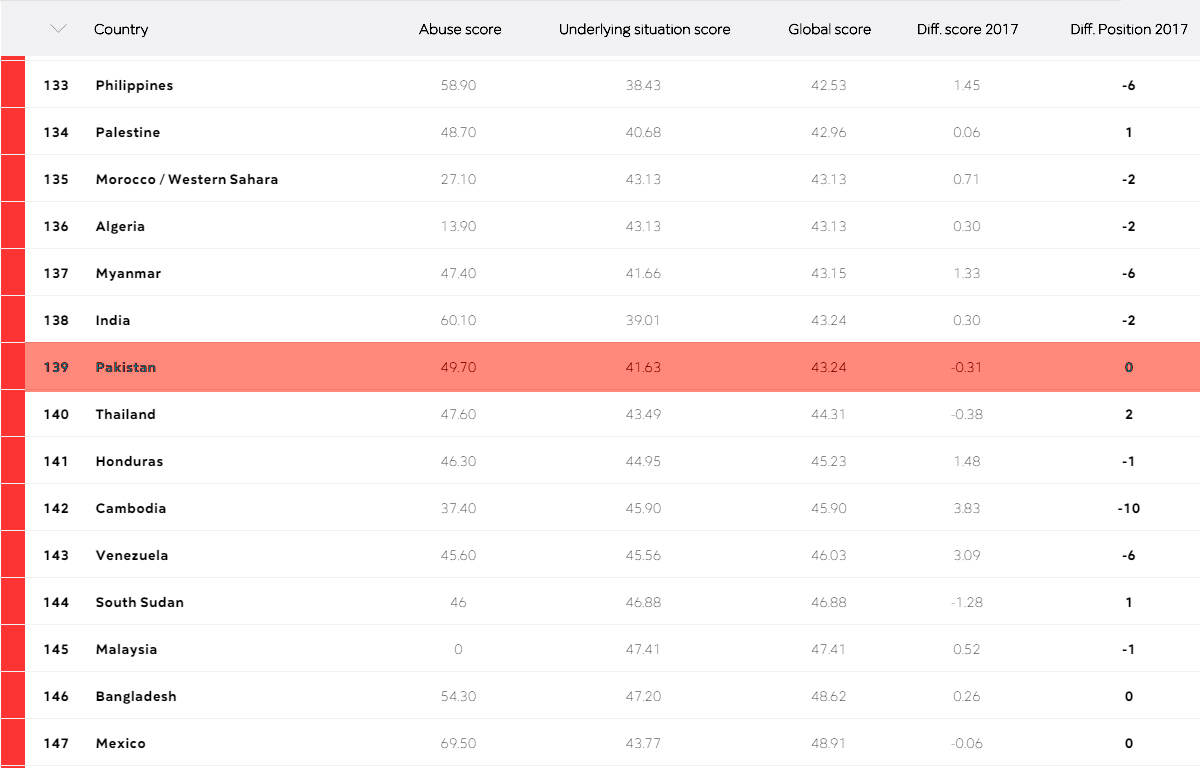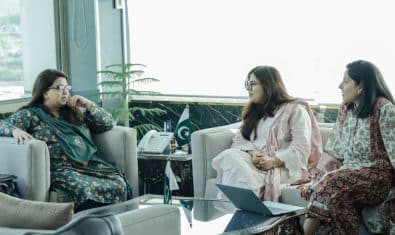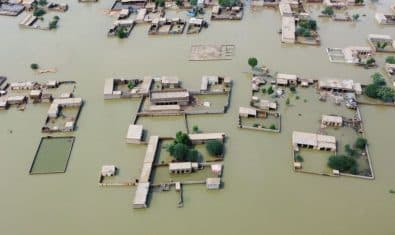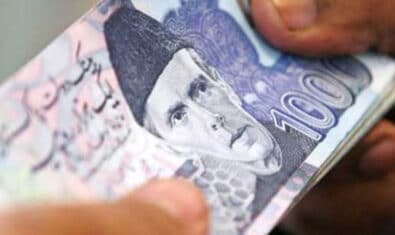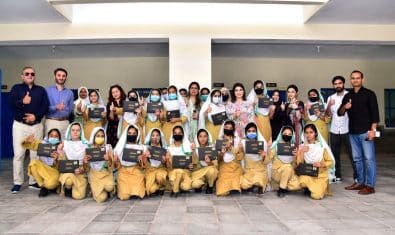Reporters Without Borders (RWB) – a non-profit organisation that works to defend global press freedoms – has published its World Press Freedom Index 2018 report. The report ranks countries based on the level of press freedoms available to journalists working in a particular country.
The report highlights issues that journalists face in their countries such as physical abuse, threatening, governmental impositions, and political influences that prohibit media persons from reporting faithfully. Moreover, it also emphasizes on selective censorship done by governments and rulers to influence the minds and principles of their citizens.
The report also goes in-depth in regards to regional as well as international issues that journalists are facing when it comes to their profession.
Pakistan Classified as “Bad” For Journalists
In order to assign a rank, the countries are given points between 0 to 100 – with 0 being the best state for reporting freedoms and 100 being the worst – and ranked according to the level of abuse and issues faced by journalists in a particular country.
These scores are calculated based on a number of different factors (detailed below).
ALSO READ
Pakistan Ranks Above Top Developed Nations in Happy Planet Index
In their latest rankings, Pakistan has been placed at 139th position out of 180 countries. Its low ranking has ensured that Pakistan is rated “bad” i.e. dangerous for journalists and press freedoms.
Based on their score, countries are mapped on a colorful chart. The Index classifies companies with the following color codes:
- white is “good”,
- orange is “fairly good”,
- red is “bad”,
- black indicates “very bad”.
Countries such as Afghanistan, Iraq, and North Korea fall in the “very bad” category.
Pakistan has:
- an Abuse Score of 49.70,
- Underlying Situation Score of 41.64,
- Global Score of 43.24.
Moreover, the state of press freedoms has not improved since 2017. Pakistan holds the same 139th spot since last year.
Intelligence Agencies & Islamist Organisations
RSF’s report says that Pakistan’s media is consistently targeted by intelligence agencies and extremist groups which are not afraid to resort to physical violence to ensure favorable coverage. Political parties, bigoted governmental workers, and religious groups are known to publicly attack, harass, and even kill journalists if they go against self-righteous views of the “authorities”.
The report states:
In October 2017, armed groups in the southwestern province of Baluchistan issued an ultimatum to journalists, threatening them with violence if they continued to refuse to cover the actions and statements of these groups—coverage that the journalists have not been providing under orders from the security forces. A month later, reporters were again caught in the crossfire when they tried to cover protests by religious activists that brought Islamabad to a standstill. The natural consequence has been an increase in newsroom self-censorship.
Furthermore, RSF also has a “Barometer” of journalists killed each year. This barometer lists the number of journalists, citizen journalists, and media assistants killed for making “unsympathetic” reports. Here are some recent entries to the Barometer from Pakistan.
2018
| Name | Date | Affiliation |
| Zeeshan Ashraf Butt | March 27 | Nawa-i-Waqt |
2017
| Taimoor Abbas | February 12 | (Media Assistant) |
2016
| Khan Mehmood | August 8 | Dawn News |
| Ahmed Shehzad | August 8 | Aaj TV |
2015
| Sabeen Mahmud | April 24 | (Citizen Journalist) |
| Arshad Ali Jaffari | September 8 | (Media Assistant, Geo TV) |
| Aftab Alam | September 9 | Geo TV, Samaa TV |
| Muhammad Zaman Mehsud | November 3 | Nai Baat, Daily Ummat |
RSF’s rankings use a number of different measuring factors such as,
- Pluralism – which measures subjectivity of journalistic reports.
- Media independence sees the degree of influence of governmental and political bodies on the media.
- Environment and self-censorship highlights environmental issues for reporters in a country.
- Legislative framework measures how constitutional impositions and local policies impact media reporting.
- Transparency judges how transparently news reports reflect procedures of institutes and authorities.
- Infrastructure measures the quality of the facilities and bodies which support news production.
- Abuse is the measurement of harassment, abuse, and physical violence against reporters.
ALSO READ
Terrorism in Pakistan Declines by 89% in 8 Years
In the global rankings, the country which values press freedoms most vehemently is Norway – with an Abuse Score of 0, Underlying Situation Score of 7.63, and Global Score of 7.63. The country continues to be ranked 1st since last year.
The worst five countries for press freedoms are:
- North Korea at 180th,
- Eritrea at 179th,
- Turkmenistan at 178th,
- Syria at 177th,
- China at 176th.
You can read the complete report here.

